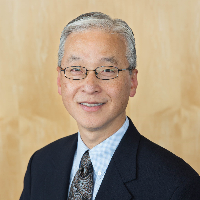News & Events / BME Seminar Series / Past Seminar Speakers / 2017-18Michael Cho, PhD

BME Seminar Series Fall 2017
Thursday, November 9, 2017 at 4-5 pm
Tech L361
Host: Professor Robert Lisenmeier
Chair and Alfred R. and Janet H. Potvin Endowed Professor of Bioengineering, University of Texas at Arlington
Elucidation of blast-induced traumatic brain injury using in vitro biosystems
Blast-induced traumatic brain injury (bTBI) is a neurological dysfunction that can result from a sudden exposure to shockwave. bTBI is presumed to bear causative and adverse consequences particularly among combat veterans. For example, post-traumatic stress disorder attributed to explosive blasts may result from such brain injuries. However, the fundamental questions about the nature, diagnosis, and long-term consequences of bTBI remain still elusive. A better understanding of brain tissue injury requires elucidation of potential biophysical and molecular mechanisms. One such mechanism may be microcavitation in the brain following exposure to a shockwave. Formation of highly pressurized micron-size bubbles has been shown plausible and, upon collapsing of the microbubbles, secondary shockwaves are produced that further exacerbate the brain tissue injuries. Recent data obtained using novel in vitro models suggest that collapse of microbubbles induces multiple pathophysiological responses that can lead to necrosis and apoptosis. In this seminar, we will discuss strategic approaches to design and validate biosystems that are capable of producing microcavitation. Integration of the biosystems with multi-modal imaging allows us to test several hypotheses to establish the mechanisms by which the brain cells are adversely impacted by the collapse of microbubbles. Successful integration of electrical engineering and tissue engineering led to the formulation of a paradigm shift in which bTBI is better understood with molecular details. Finally, while attempting to quantitatively determine the altered cell behavior and response, we have generated big data images. The ongoing effort to develop algorithms to data-mine and analyze the big cellular images is guiding us to a new direction of clinically important research and regenerative tissue engineering.
Learn more about Professor Michael Cho and their research here.
